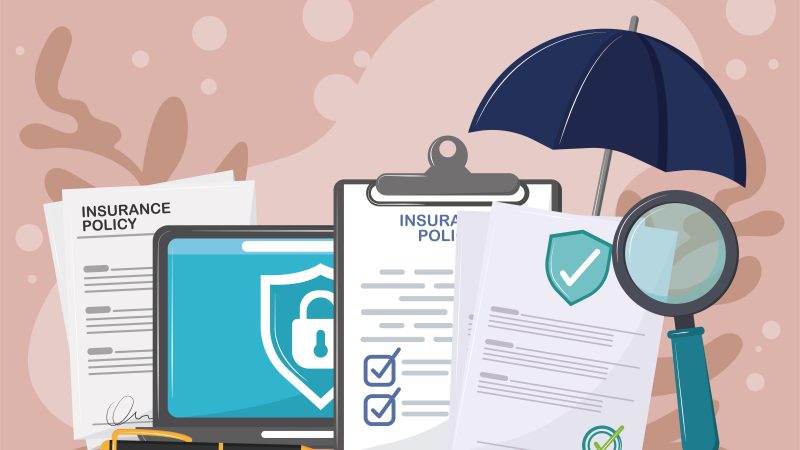Government Grants and Business Loans: Accessing Financial Support for Australian Entrepreneurs

Starting and growing a business can be an exciting journey filled with potential, but it often comes with significant financial challenges. Whether you’re a budding entrepreneur with a brilliant idea or an established business owner looking to expand, accessing the right financial support can make all the difference. In Australia, the government offers a variety of grants and business loans tailored to help entrepreneurs like you turn their dreams into reality.
Government Grants for Entrepreneurs
Government grants play a vital role in helping entrepreneurs kickstart and grow their businesses. These grants are essentially financial assistance provided by government agencies at various levels – federal, state, and sometimes even local – to support businesses in achieving specific goals or objectives. They are designed to boost innovation, drive economic growth, and create job opportunities across the country.
Government grants can provide entrepreneurs with the necessary financial resources to turn their ideas into reality, invest in research and development, or expand their operations. They can significantly reduce the financial burden and risks associated with starting or scaling a business.
Types of Grants Available to Australian Entrepreneurs
● Startup Grants: These grants are tailored for new businesses looking to get off the ground. They can cover initial setup costs, such as equipment, marketing, and legal fees. The government understands that the early stages of entrepreneurship can be financially challenging, and startup grants aim to ease this burden.
● Innovation Grants: Australia places a strong emphasis on innovation, and these grants are aimed at businesses developing new and groundbreaking products or services. They can provide funding for research and development activities, helping businesses stay competitive in a rapidly evolving market.
● Research Grants: For businesses engaged in research, especially in fields like science, technology, and healthcare, research grants offer substantial financial support. These grants can cover project expenses, equipment purchases, and the hiring of research personnel.
● Export Grants: If your business is looking to expand internationally, export grants can provide assistance in marketing and promoting your products or services overseas. They aim to help Australian businesses tap into global markets and increase their exports.
Eligibility Criteria for Government Grants
While government grants are a valuable resource, they are typically subject to specific eligibility criteria. These criteria may vary depending on the grant’s purpose and the government agency offering it. However, some common eligibility factors include:
●Business Type: The nature of your business and its legal structure can affect your eligibility for certain grants. Sole traders, partnerships, companies, and nonprofit organisations may have different requirements.
●Industry Focus: Some grants are industry-specific, focusing on sectors like agriculture, technology, or renewable energy. Your business’s alignment with these industries can impact your eligibility.
● Location: Certain grants may target businesses located in specific regions or areas experiencing economic challenges. Being in the right location can enhance your eligibility for such grants.
● Size and Turnover: The size and annual turnover of your business can also be factors. Some grants may be restricted to small and medium-sized enterprises (SMEs) or businesses of a particular size.
● Project Scope: Grants often require businesses to outline a clear project plan or proposal that demonstrates how the funds will be used to achieve specific goals or outcomes.
Research and Preparation
Before diving into the world of government grants, it’s crucial to emphasise the significance of thorough research. Research is the foundation upon which successful grant applications are built. Here’s why it matters:
● Maximising Opportunities: Research allows you to discover all available grants that might be relevant to your business. Missing out on potential sources of funding can limit your chances of success.
● Tailoring Your Approach: Each grant has its unique criteria and objectives. Research helps you understand these specifics and tailor your application to match the grant’s requirements, increasing your chances of approval.
● Avoiding Pitfalls: Knowledge is power. Research helps you avoid common mistakes, ensuring your application is well-prepared and avoids issues that could lead to rejection.
Identifying Government Agencies and Programs that Offer Grants
● Federal Government: In Australia, the federal government offers a range of grants through various departments and agencies. Start by exploring the official website of the Australian Government to find comprehensive information on available grants.
● State and Territory Governments: Each state and territory in Australia also has its own set of grants and programs. Visit the relevant government websites, such as Business Victoria or NSW Business, to find out what’s available in your region.
● Local Councils: Sometimes, local councils offer grants to support businesses in their communities. Check with your local council’s website or get in touch with them directly for information on any available grants.
● Industry-Specific Bodies: Industry associations and organisations often offer grants and support to businesses operating within their sector. If your business aligns with a specific industry, explore the opportunities provided by relevant associations.
Understanding the Specific Requirements and Objectives of Each Grant Program
● Grant Guidelines: Once you’ve identified potential grant programs, delve into the grant guidelines provided by the respective agencies. These documents outline the eligibility criteria, application process, and objectives of each grant.
● Objective Alignment: Pay close attention to the grant’s stated objectives. Ensure that your business goals align with what the grant aims to achieve. This alignment is key to a successful application.
● Eligibility Criteria: Scrutinise the eligibility criteria. Does your business meet the requirements regarding location, size, industry focus, or other specific factors? If not, consider whether adjustments can be made or if another grant might be a better fit.
● Application Deadlines: Note the application deadlines for each grant program. Missing a deadline can mean missing out on an opportunity, so plan your application timeline accordingly.
● Documentation Requirements: Grants often require supporting documents, such as business plans, financial statements, or project proposals. Be prepared to gather and submit these documents as part of your application.
Grant Application Process
Step-by-Step Guide to the Grant Application Process
Applying for government grants in Australia can be a structured and sometimes lengthy process. Here’s a step-by-step guide to help you navigate it effectively:
- Select the Right Grant: Begin by choosing the grant that best aligns with your business goals and needs. Ensure you meet the eligibility criteria and that the grant supports your specific objectives.
- Read the Guidelines: Carefully review the grant guidelines provided by the granting agency. These documents outline the application process, requirements, and evaluation criteria.
- Create a Timeline: Set a timeline for your application. Note the application deadline and work backward to allocate time for research, document preparation, and review.
- Register and Prepare: Some grants may require you to register with the granting agency or portal. Complete this registration process well in advance of the application deadline.
- Prepare a Business Plan: A well-structured business plan is often required. Outline your business’s goals, strategies, and financial projections, emphasising how the grant will contribute to your success.
- Write a Compelling Proposal: Craft a persuasive grant proposal (see section B for tips). Address the grant’s objectives and criteria clearly and concisely.
- Gather Supporting Documents: Compile all necessary documents, such as financial statements, project plans, and any other paperwork specified in the grant guidelines.
- Complete the Application: Follow the provided application form or process diligently. Pay close attention to details, and provide accurate and concise responses.
- Review and Edit: Proofread your application and consider seeking input from others. Ensure it is free of errors and presents a coherent and compelling case.
- Submit the Application: Submit your application by the specified deadline. Ensure all required documents and information are included.
- Follow-Up: After submission, follow up with the granting agency if necessary. They may have questions or require additional information.
- Wait for a Response: Be patient while the application is reviewed. Response times can vary, but you can typically expect to hear back within a few months.
Tips for Writing a Compelling Grant Proposal
Writing a persuasive grant proposal is essential for success. Here are some tips to help you create a compelling proposal:
● Address the Grant’s Objectives: Demonstrate how your project aligns with the grant’s stated goals and objectives.
● Be Concise and Specific: Write concisely while providing all necessary details. Avoid vague language and ensure your proposal is easy to understand.
● Highlight Impact: Emphasise the positive impact your project will have on your business, the community, or the industry.
● Tell Your Story: Share your business’s story, explaining why it’s uniquely positioned to benefit from the grant.
● Provide a Budget: Present a detailed budget that clearly outlines how the grant funds will be used.
● Show Sustainability: Describe how your project will be sustainable beyond the grant period.
● Use Supporting Evidence: Back up your claims with data, research, testimonials, or other forms of evidence.
● Proofread and Edit: Eliminate errors and ensure your proposal is well-organised and professional.
Gathering Necessary Documentation and Information
The specific documentation required for your grant application can vary, but commonly requested items include:
● Business Plan: A comprehensive business plan outlining your business’s history, objectives, strategies, and financial projections.
● Financial Statements: Income statements, balance sheets, and cash flow statements to demonstrate your business’s financial health.
● Project Plan: If applicable, provide a detailed plan outlining how you intend to use the grant funds to achieve your project’s objectives.
● Proof of Eligibility: Documents proving your business’s eligibility, such as registration certificates, licenses, or other legal documents.
● Personal Identification: Identification documents for key personnel involved in the application.
● References and Recommendations: Letters of support or recommendations from relevant parties, such as industry experts or partners.
● Market Research: Data or reports supporting the market need for your project or product.
Business Loans for Entrepreneurs
Business loans serve as a valuable financial resource for Australian entrepreneurs looking to fund their startups or grow their existing businesses. These loans, offered by banks, financial institutions, and government-backed programs, play a critical role in providing capital that can be used for various purposes:
● Startup Capital: For new entrepreneurs, business loans can provide the initial capital needed to turn innovative ideas into functioning businesses. This funding can cover startup costs, including equipment, inventory, and marketing.
● Expansion and Growth: Established businesses can use business loans to expand their operations, open new locations, or invest in research and development to stay competitive.
●Working Capital: Loans can be used to address short-term financial needs, such as covering payroll, purchasing inventory, or managing cash flow during slower business periods.
● Capital Investment: Entrepreneurs can acquire essential assets like machinery, vehicles, or technology through equipment loans, enabling them to enhance productivity and efficiency.
Types of Business Loans Available to Australian Entrepreneurs
● Small Business Loans: These loans are designed specifically for small and medium-sized enterprises (SMEs). They typically offer relatively low interest rates and flexible repayment terms. Small business loans can be used for various purposes, including working capital, expansion, or equipment purchases.
● Equipment Loans: Entrepreneurs requiring machinery, vehicles, or other specific equipment can opt for equipment loans. These loans are secured by the equipment itself and may have more favourable terms than unsecured loans.
● Working Capital Loans: Working capital loans are short-term loans used to cover day-to-day operational expenses, such as payroll, rent, and inventory. They help maintain smooth business operations during periods of fluctuating cash flow.
●Commercial Real Estate Loans: If your business needs to acquire or expand into commercial real estate, such as offices, warehouses, or retail spaces, commercial real estate loans provide the necessary funds.
● Business Lines of Credit: A business line of credit offers entrepreneurs access to a predetermined credit limit. They can withdraw funds as needed and only pay interest on the amount borrowed. It’s a flexible financing option suitable for various business needs.
● Government-Backed Loans: The Australian government offers several loan programs designed to support businesses, such as the Small Business Loan Guarantee Scheme and the Export Finance Australia loan programs. These loans often have favourable terms and may be more accessible to certain businesses.
Eligibility Criteria for Business Loans
Eligibility criteria for business loans can vary depending on the lender and the type of loan. However, here are some common factors considered when assessing eligibility:
● Creditworthiness: Lenders typically evaluate your personal and business credit history. A strong credit score and history can improve your eligibility and help secure more favourable loan terms.
● Business Age: Some lenders may require businesses to have a minimum operating history, often at least six months to a year, to qualify for loans.
● Revenue and Profitability: Lenders assess your business’s financial performance, including revenue and profitability. They want to ensure that you can repay the loan.
● Business Plan: Having a well-structured business plan that outlines your business goals and strategies can strengthen your loan application, especially for startups.
● Collateral: Depending on the type of loan, lenders may require collateral, such as assets or property, to secure the loan. Collateral can reduce the lender’s risk and improve your chances of approval.
● Legal Structure: The legal structure of your business, whether it’s a sole proprietorship, partnership, corporation, or LLC, can impact your eligibility for certain loans.
● Industry and Purpose: Some lenders may specialise in specific industries or purposes, such as healthcare or technology. The nature of your business and the loan’s intended use can influence eligibility.
Financial Planning and Business Plans
A well-structured business plan serves as a roadmap for a loan application, demonstrating commitment to the business, clear goals, and risk management. It provides lenders with insight into the business’s financial situation and the ability to repay the loan. Financial projections, such as income statements and balance sheets, give lenders a glimpse into the business’s financial situation. A well-done plan also gives lenders confidence in the business and increases the chances of approval.
A solid financial plan is crucial for showing lenders that the business can repay the loan. This includes detailed projections covering a few years, a clear repayment plan that aligns with cash flow, and calculating the Debt Service Coverage Ratio (DSCR) to demonstrate the ability to handle loan payments. A backup plan, detailing how the loan will be used to grow the business, can make the application stand out.
To create a professional application, avoid mistakes, use clear writing, and organise the application well. The business story should shine through, emphasising what makes the business unique and how the loan fits into the vision. Start with an executive summary, highlight strengths and team expertise, document assumptions, and include tax returns and bank statements to support claims. Recommendations from professionals who can vouch for the business’s skills are also recommended. Follow up with the lender to show enthusiasm and commitment. In conclusion, a well-structured business plan, a solid financial strategy, and a polished application can significantly increase the chances of obtaining funding for your entrepreneurial dreams.
Conclusion
Access to government grants and business loans can be the lifeline that transforms their visions into thriving businesses. Government grants, ranging from startup support to innovation initiatives, offer vital financial assistance, while a diverse array of business loans, such as small business loans and working capital loans, cater to different business needs. However, success in obtaining these financial resources hinges on meticulous research, well-structured business plans, and the ability to meet eligibility criteria.
By navigating the grant and loan application processes effectively, entrepreneurs can seize the opportunities presented by these financial instruments and turn their entrepreneurial dreams into reality, contributing to the nation’s economic growth and innovation.






